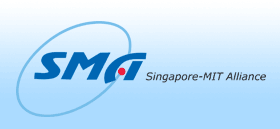Research Outline:
Underwater bubble dynamics include features such as jet impact and merging that entail complex topological changes. The front tracking-boundary element method, an established computational method for modelling these dynamics, is unable to handle such topological changes well. The level set method, which represents a physical interface implicitly, can handle these topological changes naturally. The objective of our work is to develop a level set-boundary element method for the simulation of underwater bubble dynamics.
An important aspect of our work is to formulate the means to evolve the surface velocity potential. We propose a level set-type potential function and derive a governing equation to evolve this potential function such that the function value at the interface is the surface velocity potential consistent with Bernoulli’s equation. Based on this formulation, we implement a level set-boundary element method for axisymmetric problems. A convergence analysis, performed using the Rayleigh bubble as reference, showed our implemented procedure to be second-order accurate.
We apply our level set-boundary element method to three test problems. The first test problem is a buoyant bubble that develops a liquid jet subsequently resulting in jet impact and the formation of a toroidal bubble. The second test problem comprises two simply-connected bubbles incepted close to each other eventually merging to form a single bubble. The final test problem consists of a simply-connected bubble incepted close to a toroidal bubble eventually merging to form a single simply-connected bubble. The complex topological changes associated with jet impact and merging in the above test problems are all handled naturally by our level set-boundary element method.
|


